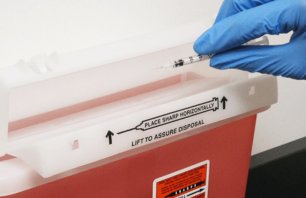Ban on Flushing Drugs
Late last year, the Environmental Protection Agency (EPA) released the Final Rule on the management of hazardous waste pharmaceuticals. Once effective, organizations of all sizes will be required to comply with the regulation by August 21, 2019 (timing of state adoption will vary by state).
A major component of the rule bans flushing as a form of disposing hazardous waste pharmaceuticals. The rule bans the practice in all situations, this part of the rule will become effective in all states on August 21, 2019.
Why Is Flushing Bad?
Health care facilities “sewering” pharmaceutical waste can have a severe impact on the surrounding ecosystems. Since hazardous drugs are not effectively removed from typical waste treatment systems, flushing allows dangerous chemicals to enter waterways.
To limit such pollution, the EPA and other regulatory bodies have taken steps to establish key standards that maintain better protection of human health and the environment. For instance, part of the EPA’s push to adopt the new rule stems from a 2008 study that detected pharmaceuticals in the drinking water of 24 major water systems, serving more than 40 million Americans.
Although scientists do not yet completely understand the long-term effects of trace pharmaceuticals on humans over time, there have already been concerning impacts to fish and wildlife that point to ways in which these pollutants may eventually harm humans. By banning flushing, the EPA hopes to prevent thousands of tons of hazardous waste pharmaceuticals from passing into the environment. Although the Final Rule regulates hazardous pharmaceuticals specifically, it also strongly discourages the flushing of any pharmaceuticals.
Focus on Safer Alternatives
To keep drugs out of waterways and maintain compliance with the flushing ban, health care organizations should take a close look at their current hazardous pharmaceutical disposal programs and confirm whether existing processes are in line with the new mandate. Here are three key questions to ask when reviewing procedures:
· What is your current policy on disposal of hazardous waste pharmaceuticals? The EPA is banning the sewering of hazardous waste pharmaceuticals and requires that they are sent to a Treatment, Storage and Disposal Facility (TSDF) for proper disposal, to prevent them from leaching into the environment. Double check that your pharmaceutical waste partner is able to take this waste. It is also important to make sure there is documentation showing that treatment has occurred.
· Do you properly segregate hazardous waste pharmaceuticals from other waste? Staff should understand where they can and cannot throw away hazardous drug waste. Be sure that disposal areas are easily accessible and clearly marked.
· Support drug take-back programs. For hazardous wastes pharmaceuticals that are taken outside of or away from health care facilities such as for patients who use prescribed drugs in a home setting, it is helpful to offer a safe way for them to dispose of any unused medications. This may entail connecting them with drug take-back programs or seal-and-send initiatives. To encourage compliance, providers should educate patients about available programs in their communities.
Making a Commitment to Long-Term Sustainability
Taking proactive steps to help ensure hazardous drugs don’t pollute the environment is not only a requirement, it is also the right thing to do. Let Stericycle help your organization re-examine and re-tool its current approach to support long-term sustainability within your local community and beyond.



